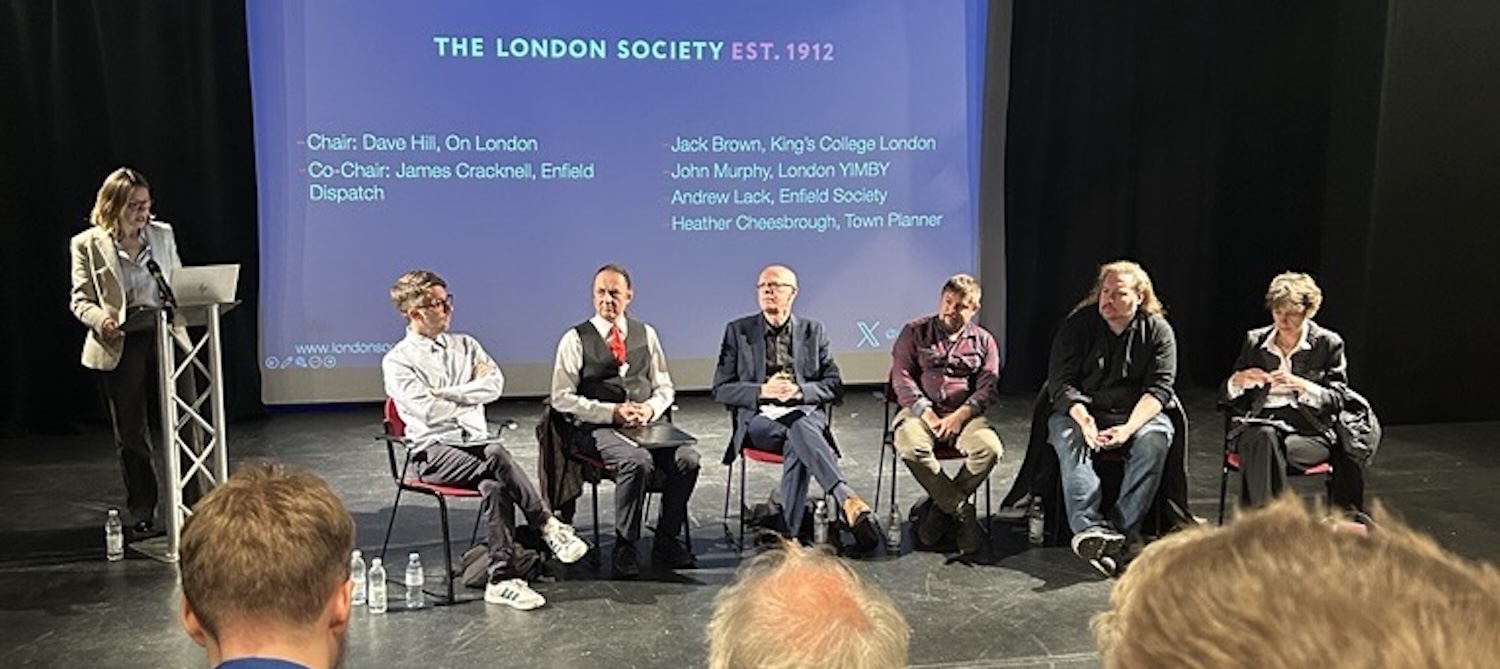

On Monday 15th September, Concilio attended a lively debate at the Dugdale Centre in Enfield, Where London Meets the Countryside: Tackling the Housing Crisis in Enfield. The event explored the sensitive issue of greenbelt land and asked whether releasing more of it is the answer to Enfield and London’s housing crisis.
The panel consisted of five speakers and Chair Dave Hill from On London. The speakers were Jack Brown from King’s College London, James Cracknell of the Enfield Dispatch, Andrew Lack from The Enfield Society, John Murphy from The London YIMBY movement and Heather Cheesbrough, a town planner.
Jack Brown opened the debate with a history of London’s greenbelt. Concerns about loss of the countryside and attempts to constrain London’s growth can be dated as far back as 1593, with an Act of Parliament by Elizabeth I that banned new buildings within three miles of London and Westminster. In the 1950s, the modern greenbelt that has endured to this day was designed to prevent urban sprawl and keep land around major cities open.
James Cracknall, editor of the Enfield Dispatch, then spoke about the examination in public of the Enfield Local Plan, noting the historic tension on preserving greenbelt and meeting housing targets. Many local people were surprised in 2018 when four sites were identified for potential greenbelt release, including Cruise Hill and Chase Park (known locally as Vicarage Farm) for residential-led developments, which Enfield Council is currently consulting on. Given the new Labour government’s ambitious housing targets, he asked if Enfield Council had been ahead of the curve in its plans.
John Murphy of The London YIMBY movement spoke next, leading with the unaffordability of London’s housing stock and its impact on young people and families. He pointed out that the greenbelt is three times the size of London and thus constraining growth throughout a region. He argued for a zoning system and highlighted the human cost of prioritising brownfield sites, often local industrial hubs providing jobs and infrastructure.
This was followed by Andrew Lack of The Enfield Society, who emphasised the society’s purpose of preserving the borough’s historic charm. He argued that Enfield Chase should be considered as significant as Hampstead Heath or Richmond Park, and that tall buildings could significantly change the character of Enfield. The society is not against development so long as it is sympathetic to the area and supports planning applications where they are considered appropriate.
Finally, town planner Heather Cheesborough took a neutral stance on the greenbelt. She spoke about how local authorities have a duty to draw local plans in line with government legislation such as the NPPF and that housebuilding targets are a key part of this. Her speech highlighted the significant number of housing needed to meet these targets and the current shortfall and backlog.
Discussion was then opened to the floor, and the panel answered questions from the audience on environmental concerns, the ambiguous definition of grey belt land and how more young people can be encouraged to get involved and support planning applications for growth, among others. Key areas of debate included concern about new housing being genuinely affordable, the backlog and inefficiency in the planning system and how to ensure developments are built in areas with sufficient infrastructure and public transport. An interesting question was asked regarding The Enfield Society’s view on tall buildings, and how protecting more greenbelt land can be squared with limiting density and high-rise buildings elsewhere in the borough.
The debate provided valuable insight into the lively debate in Enfield about development, showing that while there was concern about losing greenbelt land, many people would support development where infrastructure and transport networks are provided or already present.
Written by Rochelle Blakeman
